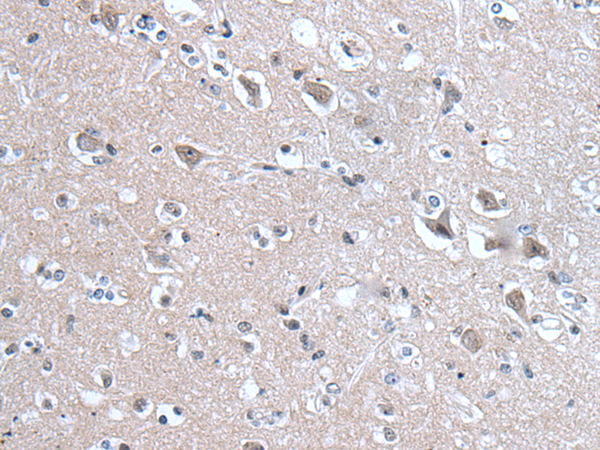

| WB | 咨询技术 | Human,Mouse,Rat |
| IF | 咨询技术 | Human,Mouse,Rat |
| IHC | 1/10-1/50 | Human,Mouse,Rat |
| ICC | 技术咨询 | Human,Mouse,Rat |
| FCM | 咨询技术 | Human,Mouse,Rat |
| Elisa | 1/5000-1/10000 | Human,Mouse,Rat |
| Aliases | SBF; STAF; pHZ-1 |
| Host/Isotype | Rabbit IgG |
| Antibody Type | Primary antibody |
| Storage | Store at 4°C short term. Aliquot and store at -20°C long term. Avoid freeze/thaw cycles. |
| Species Reactivity | Human, Mouse, Rat |
| Immunogen | Synthetic peptide of human ZNF143 |
| Formulation | Purified antibody in PBS with 0.05% sodium azide and 50% glycerol. |
+ +
以下是关于ZNF143抗体的3篇参考文献及其摘要概括:
1. **文献名称**:*ZNF143 mediates CTCF-bound chromatin loops and regulates gene promoters in human cells*
**作者**:Bailey SD, et al.
**摘要**:该研究利用ZNF143抗体进行ChIP-seq实验,揭示ZNF143与染色质绝缘子蛋白CTCF协同作用,通过形成染色质环调控基因启动子活性,影响细胞增殖相关基因的表达。
2. **文献名称**:*A compendium of promoter-centered long-range chromatin interactions in the human genome*
**作者**:Jiang Y, et al.
**摘要**:通过ZNF143抗体的染色质构象捕获分析(Hi-C),发现ZNF143在长距离染色质互作中起关键作用,参与维持三维基因组结构并调控远端增强子与启动子的相互作用。
3. **文献名称**:*ZNF143 interacts with p73 and is involved in cisplatin resistance through the transcriptional regulation of DNA repair genes*
**作者**:Tanaka H, et al.
**摘要**:研究使用ZNF143抗体验证其在癌细胞核内的表达定位,发现ZNF143通过结合p73调控DNA修复通路基因(如ERCC1),促进肿瘤对顺铂化疗的耐药性。
The zinc finger protein 143 (ZNF143), also known as STAF, is a transcription factor characterized by its DNA-binding C2H2-type zinc finger domains. It plays a critical role in regulating gene expression by binding to specific promoter or enhancer regions, often interacting with other transcriptional machinery to modulate RNA polymerase II-dependent transcription. ZNF143 is involved in diverse cellular processes, including cell cycle regulation, apoptosis, and differentiation. Studies have linked it to the activation of both coding and non-coding RNAs, as well as the maintenance of chromatin architecture through long-range DNA interactions. Dysregulation of ZNF143 has been implicated in cancers, developmental disorders, and neurological conditions, underscoring its biological significance.
Antibodies targeting ZNF143 are essential tools for investigating its expression, localization, and molecular interactions. These antibodies are widely used in techniques such as Western blotting, immunohistochemistry, chromatin immunoprecipitation (ChIP), and immunofluorescence to study ZNF143's role in transcriptional networks and disease mechanisms. Many commercially available ZNF143 antibodies are raised against epitopes within its N-terminal transactivation domain or C-terminal zinc finger regions. Their specificity is often validated using knockdown/knockout cell lines or competitive peptide-blocking assays. As research on ZNF143 expands, particularly in epigenetics and 3D genome organization, reliable antibodies remain crucial for elucidating its context-dependent functions and therapeutic potential.
×